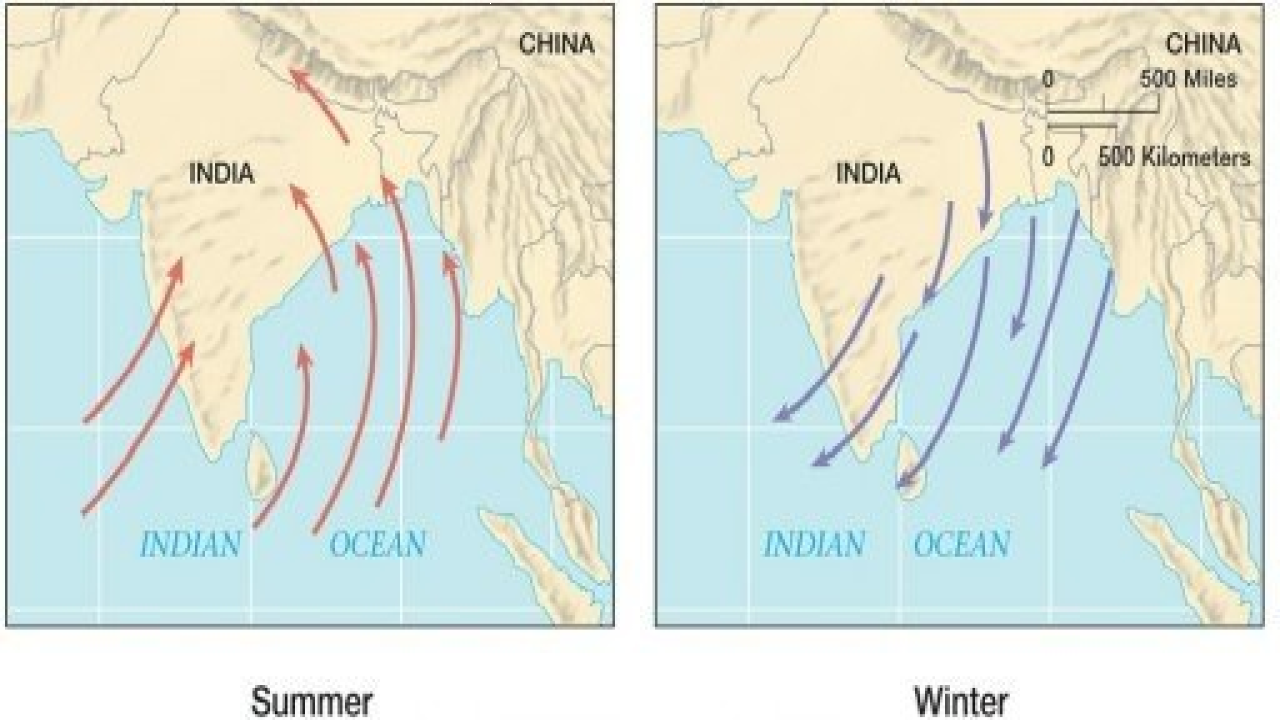Mechanism of Indian Monsoons
The Indian monsoon is a critical weather phenomenon that affects the lives of millions of people in the Indian subcontinent. The monsoon refers to the seasonal wind patterns that bring heavy rainfall to the region, with the Southwest monsoon bringing the majority of the annual precipitation.
Mechanism of Indian Monsoons
The mechanism of Indian monsoons is complex and influenced by several factors, including the topography of the region, global climate patterns, and oceanic currents. The monsoon is primarily driven by the differential heating of land and water, as well as the seasonal changes in atmospheric pressure.
During the summer months, the landmass of the Indian subcontinent heats up faster than the surrounding ocean waters. This leads to the formation of a low-pressure system over the land, which draws in moisture-laden winds from the surrounding oceans. These winds bring heavy rainfall to the region, with the majority of the precipitation occurring between June and September.
The Southwest monsoon is the primary source of rainfall in India, with the Northeast monsoon bringing additional rainfall to parts of the country between October and December. The intensity and timing of the monsoon can vary from year to year, depending on factors such as El Niño, the Indian Ocean Dipole, and other global climate patterns.
Rainfall Patterns
The rainfall patterns in India are highly variable and influenced by several factors, including the monsoon, topography, and other local weather patterns. The majority of the annual precipitation occurs during the monsoon season, with the highest rainfall amounts typically occurring in the northeastern and southwestern regions of the country.
The monsoon season can also bring heavy rainfall and flooding, which can cause significant damage to infrastructure and agricultural crops. In recent years, climate change has led to changes in the timing and intensity of the monsoon, which has had implications for agriculture and water management in the region.
History
The Indian monsoon has been a critical weather phenomenon for thousands of years, with ancient civilizations relying on the seasonal rains for agriculture and other activities. The earliest written records of the monsoon date back to the ancient Indian texts known as the Vedas, which describe the seasonal wind patterns and their influence on agriculture and other aspects of life.
Over the centuries, the monsoon has played a critical role in shaping the culture and society of the Indian subcontinent, with festivals and traditions celebrating the arrival of the monsoon and the abundance of rainfall.
Types
There are two main types of monsoons that affect the Indian subcontinent: the Southwest monsoon and the Northeast monsoon. The Southwest monsoon is the primary source of rainfall in India, bringing heavy precipitation to the region between June and September. The Northeast monsoon brings additional rainfall to parts of the country between October and December, primarily affecting the southeastern coast of India.
Examples
One example of the impact of the monsoon on India is the agricultural sector. The monsoon provides the majority of the rainfall that is needed for agriculture in the region, with crops such as rice, wheat, and cotton relying on the seasonal rains. However, variability in the monsoon can lead to crop failures and food shortages, which can have significant social and economic implications.
Another example is the impact of the monsoon on infrastructure and transportation. Heavy rainfall and flooding during the monsoon season can cause damage to roads, bridges, and other infrastructure, disrupting transportation and causing economic losses.
Issues
One of the main issues related to the Indian monsoon is the impact of climate change on the timing and intensity of the seasonal rains. Studies have shown that global warming is leading to changes in the monsoon patterns, with potentially significant implications for agriculture, water management, and other aspects of life in the region.
Another issue is the management of water resources during the monsoon season. While the monsoon brings significant amounts of rainfall, it is not evenly distributed across the region, and some areas may experience drought or water scarcity despite the overall abundance of rainfall. Effective management of water resources, including irrigation systems and reservoirs, is critical for ensuring that water is available for agriculture, domestic use, and other activities throughout the year.
Additionally, heavy rainfall and flooding during the monsoon season can lead to significant damage to infrastructure and homes, particularly in areas with inadequate drainage systems and other infrastructure. This can have significant social and economic implications for the affected communities.


